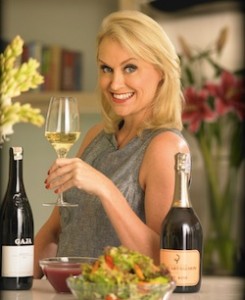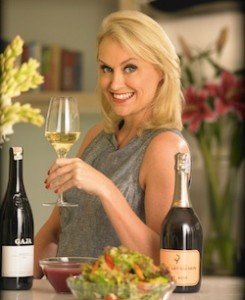Text by Kindra Cooper; Photos by Ricky Yudhistira
A raw food diet can be wallet-friendly and a gateway to unprecedented heights of “feeling good,” says Australian wine expert and certified raw food chef Simone Baldwin.
To appreciate the raw food diet, one must first understand the role of enzymes in digestion and nutrient absorption. Raw food-ism, a wholly plant-based regimen, avoids heating any ingredient past a threshold of 45 degrees Celsius, above which enzyme function plateaus and then drops.
Abiding that limit has a utopic effect on physical well-being and the psyche, says Baldwin, citing the cascade effect of a clearer mind, stable moods and higher self-esteem simply from optimized metabolism at the cellular level.
“When you have a taste of that, waking up feeling amazing every day, why would you go back to feeling lethargic and sluggish and bloated and have poor digestion and poor sleep? So that’s why for me it was such an eye-opener, an epiphany.”

After going raw three years ago, Baldwin claims to need only five hours of sleep, soaring energy levels being the effect of curtailing animal products and deferring tothe stove only for quick sautéing to soften vegetables. “You can go to bed a bit later and you wake up – ding! Fresh as a daisy – let’s go!” says Baldwin, who compares the “business” of feeling good to “a full-time job”.
Not such a bland affair
The purist “no-heat” approach of raw cuisine applies equally well to salads as to bread (‘baked’ in a dehydrator for 12-16 hours or in a fan-forced oven), desserts and even burger patties, which Baldwin makes using dehydrated ground almonds, cashews, pumpkins and sesame seeds - yielding an alleged just-like-beef taste. Meanwhile, soups are made from vegetable purée and served cold, while the raw version of chocolate mousse attributes its fluffiness to avocado instead of whipped cream.
Ultimately, ‘rawism’ comes down to less-is-more substitution of ingredients. For example, Celtic sea salt and Himalayan crystal salt are more flavorful than refined salt, posing less risk of excess sodium ingestion; while sweetening smoothies or desserts with nutrient-rich dates, honey or rice syrup packs double healthful value.
Baldwin has found that in addition to a dampened appetite, her body is sated with simpler foods.
”The more you start fueling yourself with this natural food, your body just kind of recalibrates and it just says Wow, I actually just really needto thrive on ‘this’. And ‘this’ might just be a repertoire of different fruit and veggies. My diet’s really simple now,” says Baldwin, who admits to embarking on the raw “journey” cold turkey and with no costlier wherewithal than a knife, a blender and “a desire to know more”.
All of this Baldwin strives to instill in the ‘Healthy, Gorgeous and Tipsy’ classes she teaches in Jakarta. “In my classes I encourage people to just try it," she says. "Just take the bits that you like and always follow what your body is telling you.”
Raw food and‘real life’
Barring the application of heat, food preparation involves hassling preamble such as dehydrating and hydrating, sprouting, chopping, blending and fermenting. In addition, condiments must be made in advance - particularly for those with work and travel commitments. However, unlike an oven, a dehydrator can be left overnight without posing a fire hazard. Hence preparation becomes a ritual that alternates between processing and leaving to stand overnight.
The business development manager for a local wine importer, Baldwin consumes an average of 60 percent raw food. “It’s not sustainable unless you’re not traveling, not having to entertain, not having to wine and dine clients and you’re just making raw food for yourself day and night - then it’s impossible,” she confesses.
When she’s working, Baldwin brings her food in three separate containers, one for raw soup, one for salad and another for a treat such as raw chocolate or ice cream.
“Raw foodies simplify their repertoire so much because they’re time-poor, so you just throw together a salad. Your veggies are already washed and they’re basically ready to go. To chop up a few items and throw it into a plastic bag takes five minutes,” says Baldwin. “The extra time you take to prepare a few extra dishes, you gain that time in the less sleep that you need and the increase in energy that you get.”
The economic question mark
While the raw food regimen is oft dismissed as the domain of New Age heretics with deep pockets, Baldwin is quick to point out the cost savings in buying whole foods versus value-added processed foods.
“I’ve definitely saved money – because vegetables aren’t expensive whereas a slab of salmon is. And a slab of imported tenderloin is expensive. Cheese is expensive […] but when you can get great fruits and vegetables that are locally grown and they’re organic then definitely you’ll save money,” says Baldwin, who notes that the raw food diet could gain undertow in modern lifestyles as awareness of diet-health ramifications spreads.

